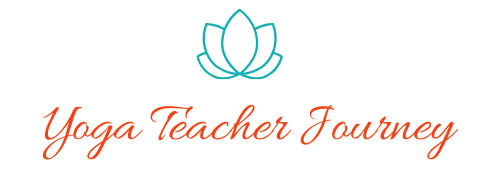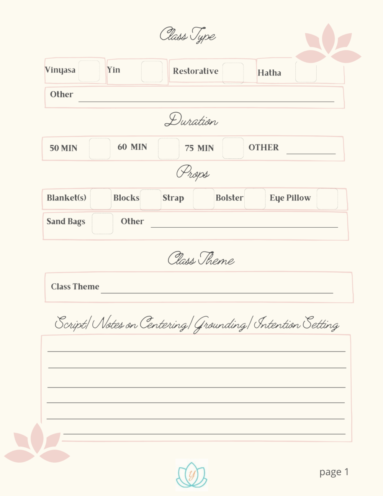Sequencing Tips for New Yoga Teachers
Should you build your yoga sequence to a “peak” pose? At some point in your yoga teaching journey, the time will come to build your own sequences. In your yoga teacher training, you may have been taught to always peak to a chosen pose. Or, you may have been taught that peaking to a pose is one option and that you may also choose to build your sequence around an anatomical part of the body or a theme (such as hip openers, heart openers, hamstrings, core, shoulders, etc.).
Before we go any further, please know that all of the above-mentioned methods are completely acceptable, and it is truly a matter of preference.
So what exactly is a “peak pose?” A peak pose is generally a pose which demonstrates a higher level of complexity. But a peak pose can also be a simple or routine posture that we choose to explore more thoroughly. It does not have to be an arm balance, a headstand, a deep back bend or any of the postures that may be intimidating to the average yoga student.
In my training, I learned that in “peaking” to a pose we must first prepare the body by gradually introducing postures with similar orientation, actions, and muscle groups.
As an example, if we are peaking to Garudasana (eagle pose) we would prepare by cueing similar actions for the shoulders and hips such as using eagle arms in a seated warm-up with Gomukhasana legs (cow face posture) and Utkatasana (chair pose) in Sun Salutation B or as part of the sequence prior to arriving at Garudasana.
Peaking to Eka Pada Rajakapotasana (half pigeon pose) would call for starting with hip opening warm-ups such as reclined pigeon or Baddha Konasana (bound angle). Then maybe adding in Utthan Pristhasana (lizard lunge) and maybe stacking hips in transitions using Tri Pada Adho Mukha Svanasana (three-legged downward facing dog).
At closer examination, we should also be looking at the actions required for the peak pose (flexion or extension), and the orientation of the bones in the peak pose (neutral, internal rotation, or external rotation). With that information at hand, we can slowly introduce postures with the same orientation and movement as the peak pose.
We should consider what primary and secondary movements are required for the pose and then gradually introduce those movements intelligently, in order to safely progress the student into the pose.
Taking the component movements of the peak posture and increasing the level of difficulty in order to arrive safely at the peak is certainly a logical approach.
But aren’t we preparing the body in this way in the sequence even if we’re not peaking to a pose? Absolutely! To me, it’s just common sense. We’re not going to send students deeply into any posture without first warming-up and preparing for it – right? Right!
In my classes, I sequence to peak poses and to themes and anatomy. Last week I taught a spring detox themed class that incorporated a lot of twists into the sequence, but not necessarily one peak pose. Did we start by going deep into Parivrtta Utkatasana (revolved chair pose)? Of course not. We started with gentle twists in Sukasana (easy seat) during the warm-up and gradually worked our way up to deeper, more intense twists held for longer periods.
In working on creating space and length in the side body, we may work up to side plank options (always with modifications offered), but would begin with gentle side stretches in the warm-up period, maybe move into Parighasana (gate pose), and a modified side plank. We would move through Phalakasana (plank) in Surya Namaskar A and vinyasas, educating the body further to prepare for side plank.
Peak or no peak, offering modifications for students who may not want to go deep into a challenging or peak posture is always advisable. Use cueing verbiage that offers students an option to “stay here – or move into ____” the deeper challenge or peak posture. You can always suggest that students take Balasana (child’s pose) if they choose not to progress into the most complex posture.
Note: all styles of a complete vinyasa sequence include: grounding/centering/intention setting, pranayama, warming-up with components that intelligently prepare the body for the main part of the sequence, sun salutations, the main part of the sequence including standing balancing poses, as well as backbend postures, counter poses, and a cooling-down segment, before ending with savasana. (The use of music, themes, inspirational quotes, mudras, mantras, and guided meditations, are all options that can enhance your class further. See How to Enhance Your Yoga Class with Jewels for more.)
Will you peak or not peak?
There are many styles to choose from to build the main part of your sequence, regardless if you choose to flow to a peak pose or not. Here are just a few:
BLOCK
The most common sequence style is the standard block flow. Here, blocks of postures are built, usually increasing in intensity, to form the main part of the sequence. This is the method I mostly use. In my sequences, the first block will usually include a low lunge, half-split, and an easy twist or a variation. Next, continuing with neutral orientation, we may progress to a high lunge or warrior I block of postures. Next, we will move into an external rotation block with the warrior II postures, triangle, etc.
LADDER FLOW
Start with your first standing posture before transitioning through a vinyasa (plank, updog or cobra, downdog), then repeat on the other side. Next time through add your next posture (so two postures), vinyasa, repeat other side. Add a third, vinyasa, repeat other side, and so forth until you build your final block of all the standing postures.
One of my favorite all time sequences was a ladder flow of all the warrior poses for a Memorial Day themed class! The final block included:
Virabhadrasana I (warrior I)
Baddha Virabhadrasana (humble warrior)
Virabhadrasana II (warrior II)
Viparita Virabhadrasana (reverse warrior)
Fallen Warrior (a variation of a low lunge easy twist)
Virabhadrasana III
WAVE FLOW
In this method, develop your main standing posture sequence block and then break it up so that the first time through you may only reach the first three postures before transitioning through the vinyasa and repeating on the other side. The next time through the block repeat the first postures and add on a few more. Finish with adding the remaining postures to complete the main part of the sequence including all of the poses.
FORWARD AND BACK
Here you begin with a pose and progress forward then back to the original pose. It might go something like this:
Virabhadrasana II (warrior II)
Virparita Virabhadrasana (reverse warrior)
Utthita Parsvakonasana (extended side angel)
Utthita Trikonasana (extended triangle)
Ardha Chandrasana (half moon)
Now back to:
Utthita Trikonasana
Utthita Parsvakonasana
Viparita Virabhadrasana
Virabhadrasana II
You then might do the same forward and back style adding in another block using different asanas if time permits.
The Bottom Line
Whatever type of sequencing style you choose, and whether you choose to use a peak pose or not, build your sequence intelligently with warm-ups and preparation to safely take your students through the class. Also remember that adding neutralizing poses to your sequence and a cool-down period is equally important. Ending with an awesome Savasana is the icing on the cake and said to be the most important of all the poses – the time when students take in all the benefits of their practice.
Want more sequencing tips and instruction? Here are some great resources:
Ashleyrosehagen.com – Online sequencing courses by Ashes Yoga
Tummee.com – Sequence Builder App
Yoga Sequencing – Designing Transformative Yoga Classes by Mark Stephens





